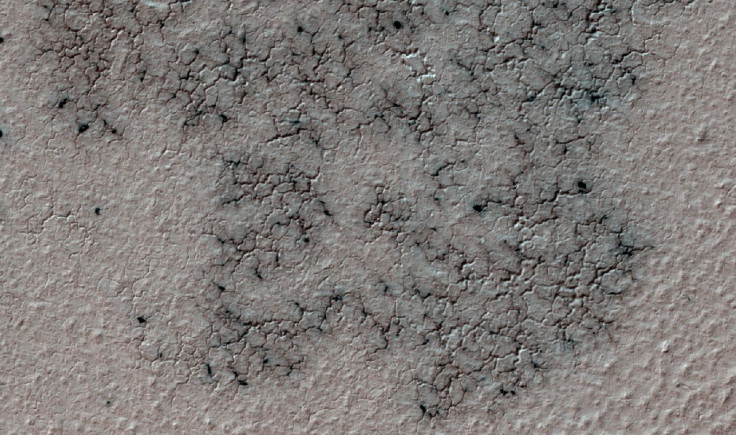‘Spiders’ On Mars: Citizen Volunteers Help NASA Shed Light On Surface Features Near South Pole

The High Resolution Imaging Science Experiment (HiRISE) camera on NASA’s Mars Reconnaissance Orbiter (MRO), has, over the past several years, captured gigantic spider-shaped features near the planet’s South Pole.
Previous studies have revealed that these structures are created when extensive sheets of ice thaw bottom-side first due to warming by the ground below it. As thawed carbon dioxide gas builds up pressure, the gas escapes through vents in the overlying sheet of remaining ice, carving channels which, when viewed from orbit, resemble the legs of a spider.
“The trapped carbon dioxide gas that carves the spiders in the ground also breaks through the thawing ice sheet. It lofts dust and dirt that local winds then sculpt into hundreds of thousands of dark fans that are observed from orbit,” planetary scientist Meg Schwamb from the Gemini Observatory in Hilo, Hawaii, said in a statement Thursday. “For the past decade, HiRISE has been monitoring this process on other parts of the south pole.”
However, fresh HiRISE observations, guided by 10,000 volunteers who have been exploring the surface of Mars by reviewing images captured by the MRO, have shown that some of these spider-like structures are even found in areas that are not believed to have slabs of carbon dioxide ice.
“From what we've learned about spider terrain elsewhere, slab ice must be involved at the locations of these new observations, even though we had no previous indication of it there,” HiRISE Deputy Principal Investigator Candice Hansen from the Planetary Science Institute in Tucson, Arizona, said in the statement. “Maybe it's related to the erodability of the terrain.”
In total, 20 new regions — identified by volunteers using the “Planet Four: Terrains” website — have been earmarked for further observation in higher resolution.
“It's heartwarming to see so many citizens of planet Earth donate their time to help study Mars,” Hansen said. “Thanks to the discovery power of so many people, we're using HiRISE to take images of places we might not have studied without this assistance.”
© Copyright IBTimes 2024. All rights reserved.






















